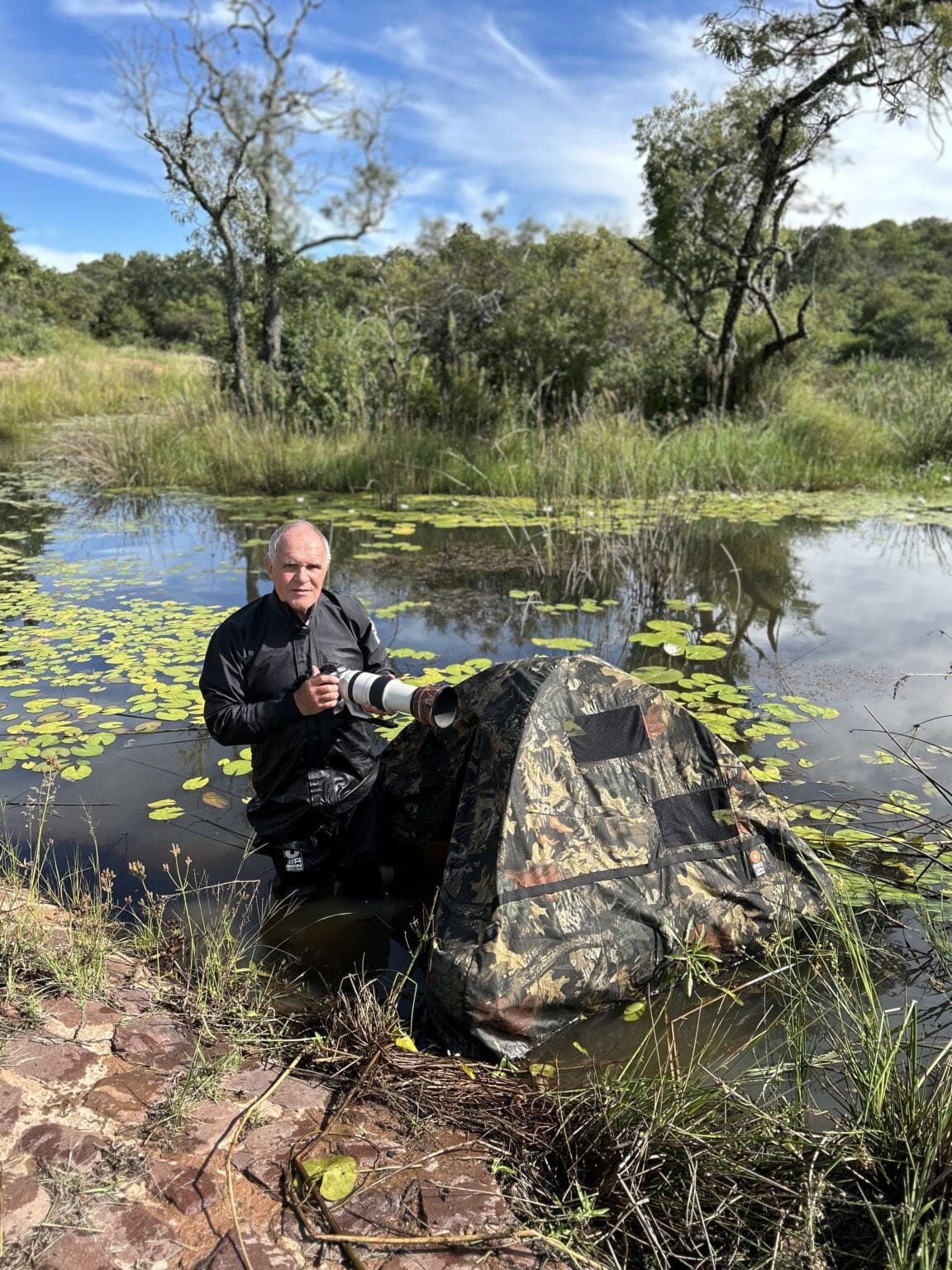It’s always great to receive news from happy customers! Like the message sent to us by Arno Ellmer, a South African nature photographer who has been visiting the African national parks for over 20 years. He recently bought one of our floating hides and sent us the results of his first shoot. We’re happy to share them with you!
“My favourite subjects are birds, but I also enjoy other wildlife photography in our numerous Game Reserves and elsewhere in Africa”, Arno tells us. “I spend much time at waterholes, dams, and other locations to get the best shots. The Kruger National Park is one of my favourite destinations. Apart from the amazing variety of wildlife, it also lists nearly 500 bird species.”
He sent us his first floating hide pictures of the African jacana, black crake, and little grebe. “When I learned about floating hides, I wanted to build one myself. But soon, I realised that I was trying to reinvent the wheel. Making a practical, helpful floating hide would take a long time. I found Mr Jan Gear on the internet. This gear has undergone a long evolution of research and development, so almost everything has been thought of, tried, and tested.
So last year, I purchased the Floating Hide Combo 3 and The Suit. It is near perfect for low-level water photography without causing damage or disturbance to the environment. It’s also light, compact, and easily transportable. Highly recommended!”
Asked about other hotspots for wildlife photography, Arno doesn’t hesitate. “There are many here. South Africa alone has a total bird species count of about 900 birds, and I also go out and explore beyond the South African borders. The Kgalagadi Transfrontier Park in the north-western area of South Africa has a semi-desert climate and is a great location to photograph raptors. The West Coast National Park on the western shores of South Africa is exciting for spotting Flamingos, ostriches, and black harriers along with curlew sandpipers, sanderlings, and knots.
The African jacana, black crake, and little grebe are common birds in South Africa. They spend their lives almost entirely on water or on the edges of dams. The African jacana – also known as Lilly trotter or ‘Grootlangtoon’ in Afrikaans – and the Black Crake (Swartriethaan) have very long toes. This enables them to stand and walk across the floating lily leaves without sinking.
The little grebe, or Kleindobbertjie, is one of our smaller water birds – only 20 cm. It frequently dives to forage for food and can remain underwater for up to 50 seconds.”
Thanks for keeping us posted, Arno! So happy to help you out! 🙌🏻








